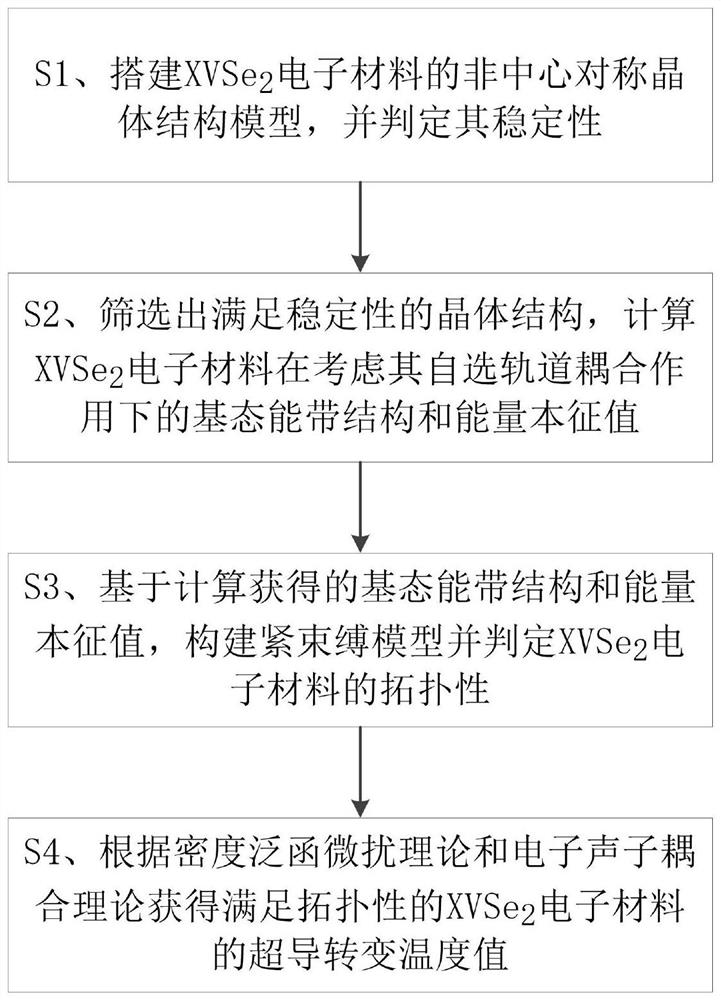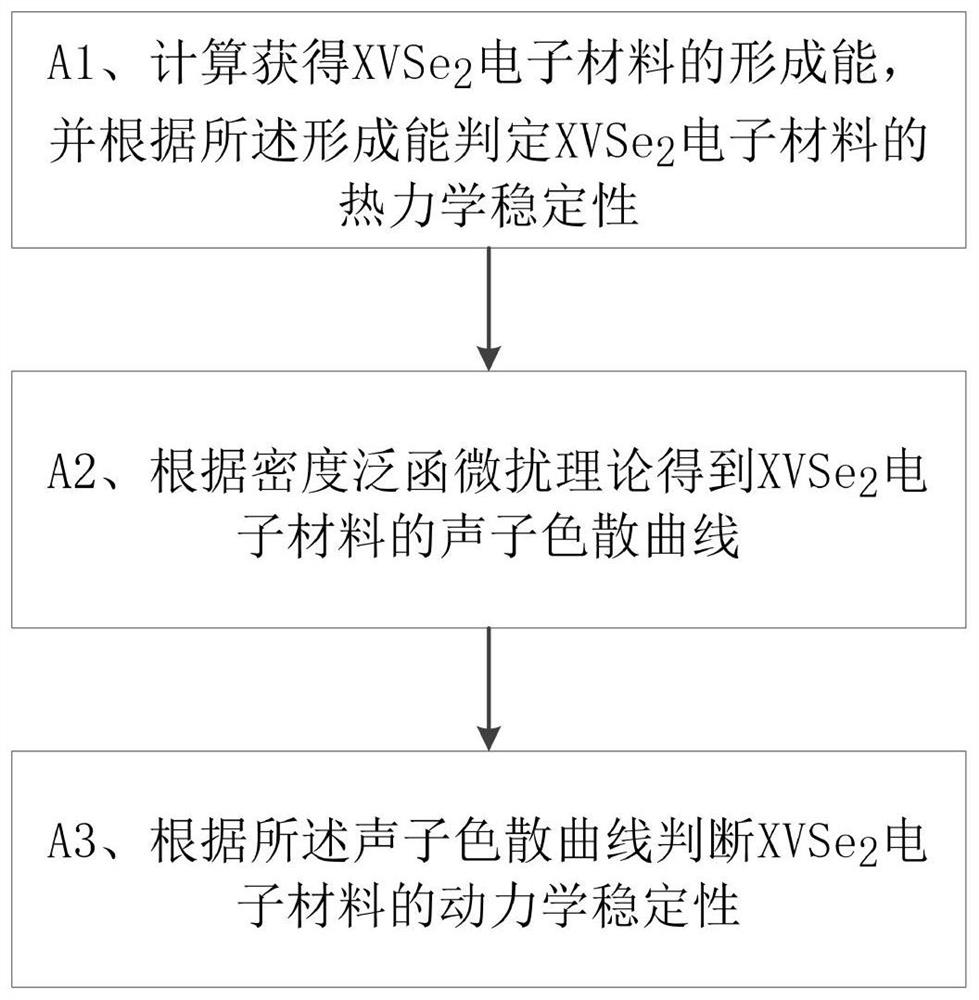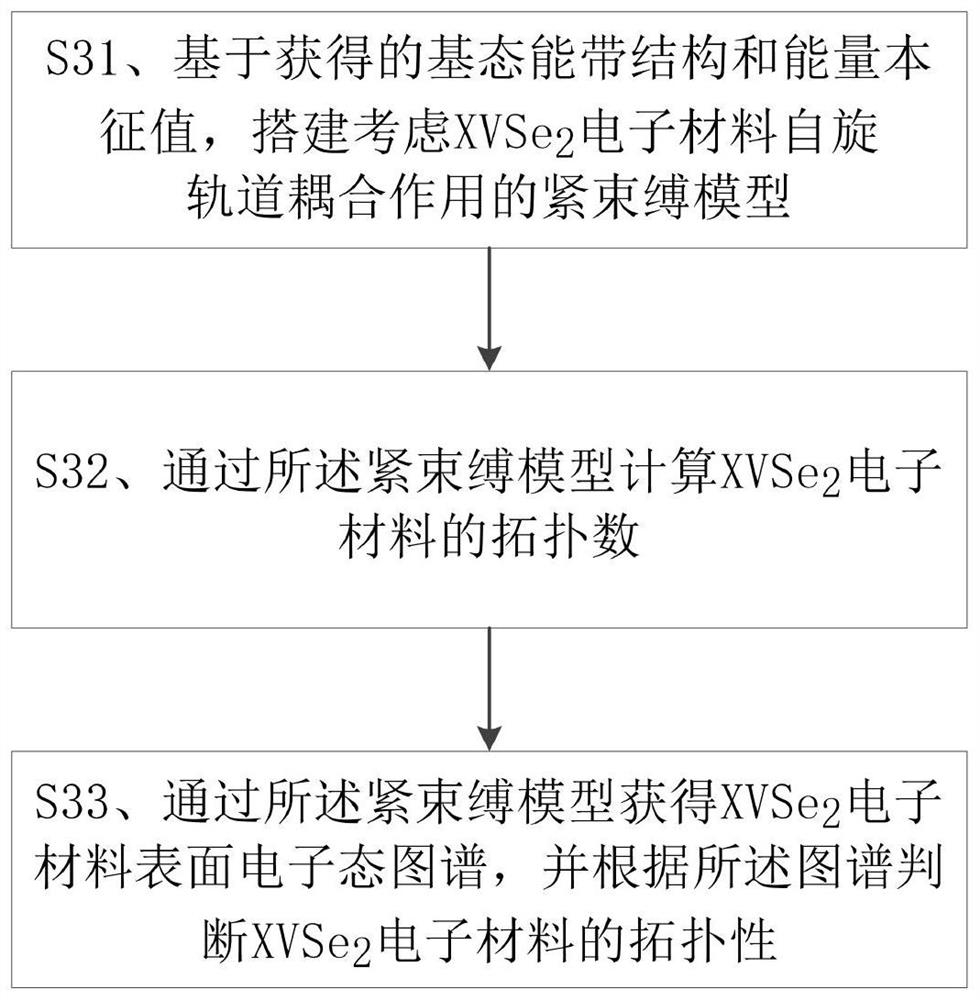Non-centrosymmetric superconducting topological electronic material analysis method and system
A non-centrosymmetric, electronic material technology, applied in the fields of computational physics and materials science, can solve the problems of difficult experimental errors, high time and economic costs, and achieve the effects of saving manpower and material resources, improving efficiency, and simplifying the screening process
- Summary
- Abstract
- Description
- Claims
- Application Information
AI Technical Summary
Problems solved by technology
Method used
Image
Examples
Embodiment 1
[0047] Such as figure 1Shown, a kind of analysis method of non-centrosymmetric superconducting topological electronic material of the present invention comprises steps:
[0048] S1. Build XVSe 2 Non-centrosymmetric crystal structure models of electronic materials and determination of their stability.
[0049] Among them, such as figure 2 As shown, the steps of judging its stability in step S1 include:
[0050] A1. Calculate XVSe 2 The formation energy of electronic materials, and according to the formation energy, the XVSe 2 Thermodynamic stability of electronic materials;
[0051] Specifically, calculate XVSe in step A1 2 The formula for the formation energy of electronic materials is:
[0052]
[0053] Among them, E f for compound XVSe 2 the formation energy, for XVSe 2 The total energy of the electronic material, μ X , μ V with Represent the chemical potentials of elements V, X and Se, respectively.
[0054] Here if its formation energy E f If it is gr...
Embodiment 2
[0076] Such as Figure 9 As shown, the present invention also provides a kind of analysis system of non-centrosymmetric superconducting topological electronic material, it is characterized in that, comprises:
[0077] Stability detection module, used to build VSe 2 Non-centrosymmetric crystal structure model of electronic materials, and determine its stability;
[0078] The energy band calculation module is used to calculate the ground state energy band structure and energy eigenvalues of the crystal structures that meet the stability requirements;
[0079] The topological detection module is used to construct a tight-binding model and determine XVSe based on the calculated ground state band structure and energy eigenvalues 2 Topology of electronic materials;
[0080] Superconducting property prediction module, used to obtain topological XVSe based on density functional perturbation theory and electron-phonon coupling theory 2 Superconducting transition temperature value...
PUM
| Property | Measurement | Unit |
|---|---|---|
| Superconducting transition temperature | aaaaa | aaaaa |
| Superconducting transition temperature | aaaaa | aaaaa |
Abstract
Description
Claims
Application Information
 Login to View More
Login to View More - R&D
- Intellectual Property
- Life Sciences
- Materials
- Tech Scout
- Unparalleled Data Quality
- Higher Quality Content
- 60% Fewer Hallucinations
Browse by: Latest US Patents, China's latest patents, Technical Efficacy Thesaurus, Application Domain, Technology Topic, Popular Technical Reports.
© 2025 PatSnap. All rights reserved.Legal|Privacy policy|Modern Slavery Act Transparency Statement|Sitemap|About US| Contact US: help@patsnap.com



